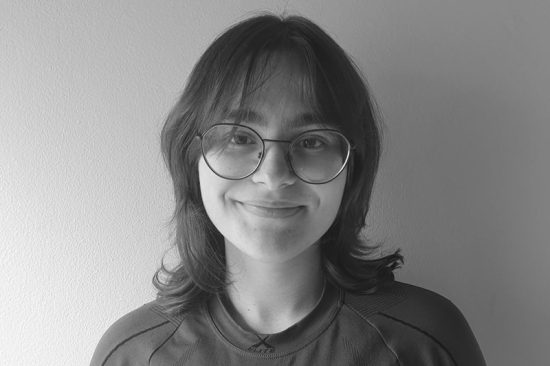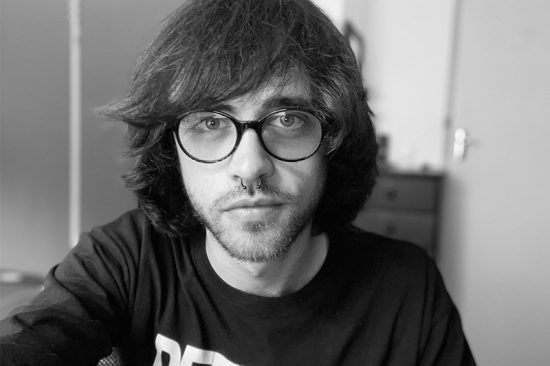
“This time period is—selfish. And that’s hard to say. But the burning of the Amazon rainforest—the people doing it, they’re not really thinking about the consequences.”
TPP45S Of the forty-five visuals you created, which is your favorite? Why?
MARYSIA KOSACKA The Victoria Amazonica. It was my favorite because it was a little bit different from the other symbols. The other ones are very much like your typical leaf. But this symbol is interesting because it was based on lily pads that are humongous and can grow up to six feet diameters wide. They are so huge there’s pictures of people sitting on them. So that one was my favorite just because looking at that symbol, the leaf looks so fragile and so delicate and really it’s a six foot lily pad.


TPP45S What was your initial response looking at the Phaistos Disc?
MARYSIA KOSACKA I was in class [when I saw the disc for the first time]. We were introduced to it when [the Phaistos Project] was assigned to us as a class project. But everybody interpreted the disc so differently. It was very overwhelming but exciting to see how everybody drew their own conclusions about it and where the disc took them [and their artwork].
TPP45S Why do you think an artifact from the past could be relevant to you and your creative practice?
MARYSIA KOSACKA I think it’s important to look at past artifacts because it does inspire you—everything around you is inspired by something in the past. I feel like there’s no original design thought. It’s more about how you make something that’s inspired you, your own.
TPP45S In Amazonian Firepit you chose to represent the deforestation-by-fire of the rainforest by manually burning images of leaves you printed out. When and why did you ultimately decide to pull out a lighter and start lighting the leaf prints on fire?
MARYSIA KOSACKA I tried giving the leaves burn mark edges on Photoshop, but it didn’t give them the kind of feel that I wanted. So that’s when I was like, “What if I manually just burned every single thing?”And I had more fun creating these kinds of edges—unpredictable edges. Because I couldn’t control the fire. There were times I was afraid the fire was going to consume my entire leaf and I had to pat the paper down. One time, I had to throw a paper into my pool because it wouldn’t stop burning. I had to do it [burning the leaves by the pool] half the time just in case.
When I was burning the leaves it reminded me of deforestation—how fast fire can spread and how destructive it can be. And that’s really what I wanted to represent in these symbols.

TPP45S You wrote in your project submission that the symbols of Amazonian Firepit are meant to showcase “the good that the Amazon Rainforest does for humanity and the bad that humanity is doing in return.” Is turning what’s happening to the rainforest into a design a form of environmental activism?
MARYSIA KOSACKA 100 percent. If I saw something like this as an outsider—of course, at first, it’s like, “Oh, this is so cool. All the edges are burned.” But at the end of the book [that was created to showcase the project], I write how I killed 1.3 percent of a tree in its design process. So although it was a fun project, and people love flipping through the pages and being able to touch the burn marks and smell the burnt pages, at the end, I think that’s when everybody realizes, “Oh, she burned all of this to make people understand that deforestation is a big issue and needs to be talked about.”
TPP4S Amazonian Firepit pairs the delicacy of the Amazon Rainforest’s leaves with the destruction of fire. Is the intersection of the delicate and destructive a common theme in your work?
MARYSIA KOSACKA In general, I do enjoy having an oxymoron type of effect in my design—playing with two contrasting themes and trying to make them into something that plays into each other.
TPP45S What does your project tell audiences of today and tomorrow about our current anthropocene and human impact on our planet?
MARYSIA KOSACKA This time period is—selfish. And that’s hard to say. But the burning of the Amazon rainforest—the people doing it, they’re not really thinking about the consequences. Many of the fires are started by illegal land grabbers encouraged by the new Brazilian government’s anti-environmental policies. The forests are burned to clear land for cattle ranching, animal feed crops, or illegal logging. They just need it, so they’ll burn it down to make room.
TPP45S Arguably, public interest in nature and environmentalism is more prominent than ever. Do you feel environmentalism will continue to inform designers’ works in the future?
MARYSIA KOSACKA Yes—I think more and more people, especially my generation, are really digging into what’s happening right now with the environment. Especially with new technology like fast internet giving people across the globe the power to share words with a click of a button. And I think the new information designers learn from that said new technology is going to really start driving them.
TPP45S What do you believe are the biggest challenges of this upcoming generation of visual artists/designers?
MARYSIA KOSACKA Probably AI and trying to make AI a tool for you instead of letting AI use you. Because I can literally go on Illustrator or Photoshop and just write something like “happy color palettes,” and it will switch my entire vector image to that theme. People might get replaced because companies can use AI to make their own designs. So I think being able to take AI and making it a tool that you can use, finding a way to incorporate it into your own design without being taken over by it is a big challenge.
TPP45S How do you recommend they do that?
MARYSIA KOSACKA Pushing the limits. Do something that you wouldn’t be so comfortable doing and try to push that even further. Make it bigger, make it better, make it you—I think that [making it you] is important because AI is AI. It’s not a person right? It’s not human, it doesn’t have emotions. Foster emotional connection in your art because AI can’t do that.
TPP45S The methodology you used in crafting this project is particularly impressive in your printed book. Do you have intentions to actually publish this work? Could you outline the steps you are contemplating to disseminate and share this project with a wider audience?
MARYSIA KOSACKA I would love for other people to see the book. I just wouldn’t even know where to start. I also don’t know if it would have the same effect if its manually burned pages were printed or scanned. Unless I wanted to burn every copy. And as much as I would love to publish it, I think burning other books would add to the problem the book is about.


TPP45S The humans who created the Phaistos Disc—if it’s not a hoax—will never be able to tell us what its forty-five symbols mean. But you are here with us today, to talk about your own set of forty-five symbols. What is it that you hope people take away from your project?
MARYSIA KOSACKA I think, in this project, you can see that we have a lot of power not only to stop something, but also to facilitate something that’s destroying our world’s biggest greenhouse. And that is something to think about—that we, the human race—have a lot of power.

Marysia Kosacka
Marysia Kosacka is a first-generation Polish American designer with a focus in web, editorial, and experimental design. She currently works at Rottet Studio as a graphic designer.
Amazonian Firepit
Special Mention Open Call 22/23


